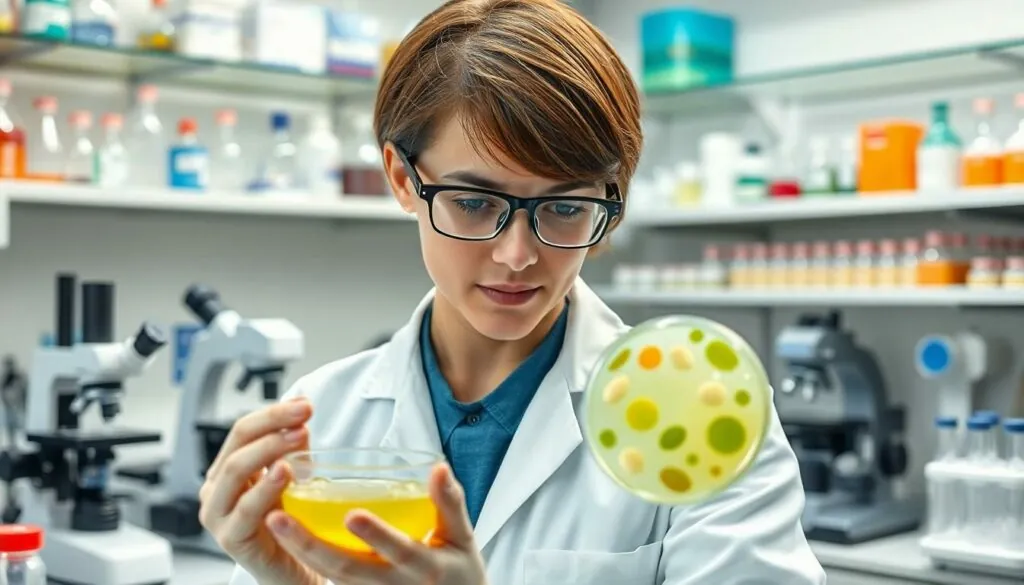Table of Contents
ToggleIn the world of medicine, biotech and pharma often get tossed around like a game of hot potato. Most people think they’re just two sides of the same coin. But hold your horses! These two fields are as different as cats and dogs, each with its own unique approach to healthcare.
Overview of Biotech and Pharma
Biotechnology focuses on using living systems and organisms to develop products and technologies. Researchers apply biological processes, often at the molecular and cellular levels, to create innovations in medicine. Various applications include gene therapy, recombinant DNA technology, and monoclonal antibody production.
Pharmaceuticals, on the other hand, concentrate on developing chemical compounds for drug treatments. These compounds aim to diagnose, cure, or prevent diseases. Companies involved in pharma typically conduct extensive clinical trials to ensure the effectiveness and safety of their drug products.
Biotech products often target previously difficult-to-treat conditions. Cancer and genetic disorders see significant advancements thanks to biotechnological methods. In contrast, pharmaceuticals mainly address more common ailments, such as infections or chronic diseases.
Research and development processes differ between the two fields. Biotech companies may invest more in early-stage research to explore breakthrough therapies. Pharmaceutical companies tend to prioritize clinical trial phases, focusing on regulatory approval for established drug formulations.
Investment levels also vary. Biotech firms often require significant funding due to lengthy research timelines. Pharma companies benefit from established market presence but face high costs related to regulatory compliance and manufacturing.
Collaboration is common in both sectors. Biotech firms may partner with pharmaceutical companies for access to distribution channels and resources. Meanwhile, pharmaceutical companies leverage biotech innovations to enhance their drug portfolios.
Understanding these fundamental differences sheds light on the unique contributions each field makes to healthcare advancements.
Key Differences Between Biotech and Pharma

Biotechnology and pharmaceuticals differ significantly in various aspects, each contributing uniquely to healthcare.
Definition and Scope
Biotechnology focuses on utilizing living organisms for product development. Its scope includes innovations such as gene therapy and personalized medicine. In contrast, pharmaceuticals center around creating chemical compounds for drug treatment. These two fields serve different purposes in healthcare, targeting a range of conditions. Biotech often addresses complex diseases like cancer, while pharma tends to focus on prevalent illnesses.
Product Development Processes
The product development processes also diverge. Biotech companies invest heavily in early-stage research, emphasizing innovation through biological methods. Extensive laboratory work and preclinical studies occur before testing in humans. On the other hand, pharmaceutical firms concentrate on late-stage clinical trials for regulatory approval. Their processes are often more structured, ensuring safety and efficacy before market introduction. Both sectors rely on rigorous testing, but the emphasis shifts depending on the organization.
Regulatory Environments
Regulatory environments differ significantly between biotech and pharma. Biotech products face stringent scrutiny given their complex biological nature. Agencies like the FDA evaluate these products based on unique guidelines. Meanwhile, pharmaceuticals follow established protocols focused on chemical compounds. Approval timelines and requirements can vary widely. While biotech may experience longer development periods, pharma must navigate intense regulatory landscapes impacting their market readiness.
Market Trends and Innovations
Biotechnology and pharmaceuticals are rapidly evolving fields that drive healthcare improvements through innovation and collaboration.
Technological Advancements
Recent breakthroughs in biopharmaceuticals emphasize targeted therapies and advanced genetic engineering. Gene editing techniques, such as CRISPR, enhance precision in treating genetic disorders. Furthermore, artificial intelligence transforms drug discovery and development processes, enabling faster identification of potential candidates. Innovations in personalized medicine allow tailored treatments based on individual genetics. Companies often integrate next-generation sequencing technologies to improve diagnostic accuracy. These advancements redefine expectations for efficacy and safety while expanding access to previously unavailable treatments.
Collaborations and Mergers
Collaborations between biotech and pharma firms become increasingly common, enhancing capabilities and resources. Strategic partnerships enable biotech companies to access funding, expertise, and distribution networks. Mergers and acquisitions often occur as larger pharmaceutical firms seek to integrate innovative biotech products into their portfolios. Many companies prioritize collaboration to maximize research potential and share risk associated with lengthy clinical trials. These alliances foster a dynamic marketplace that encourages knowledge exchange, ultimately leading to quicker advancements in therapies and improved patient outcomes.
Challenges Faced by Both Sectors
Both biotech and pharma face a range of significant challenges that impact their operations and innovations.
Financial Considerations
Funding often poses a challenge for biotech firms, as they require extensive financial resources for research and development. Due to lengthy timelines, securing investments can be difficult. In contrast, established pharmaceutical companies enjoy steady revenues but encounter high costs related to regulatory compliance and manufacturing processes. Both sectors must navigate investor expectations while managing budgets effectively. Fluctuations in investment can further complicate growth prospects and funding strategies for biotech companies. Balancing innovation with sustainable returns remains crucial for companies in both fields.
Research and Development Hurdles
Biotech organizations often grapple with regulatory complexities unique to biological products. Stricter guidelines can slow down the approval process, creating delays in bringing innovations to market. Extensive clinical trials and the need for rigorous testing apply pressure on both biotech and pharma companies. Furthermore, research efforts require continual adaptation based on emerging scientific data. As drug development timelines stretch, resource allocation becomes more critical. Both sectors strive to overcome these hurdles while focusing on delivering effective therapies to address pressing health concerns.
The distinction between biotech and pharma is crucial for understanding their roles in healthcare. Each field brings unique strengths to the table, driving innovation and improving patient outcomes. Biotech’s focus on biological processes opens doors to groundbreaking therapies, while pharma’s expertise in chemical compounds ensures effective treatments for common ailments.
As both sectors continue to evolve, their collaborations and strategic partnerships will play a pivotal role in advancing medical science. By recognizing their differences and leveraging their strengths, biotech and pharma can work together to tackle some of the most pressing health issues of our time. The future of medicine lies in their ability to innovate and adapt, fostering a landscape where both can thrive and improve lives.




